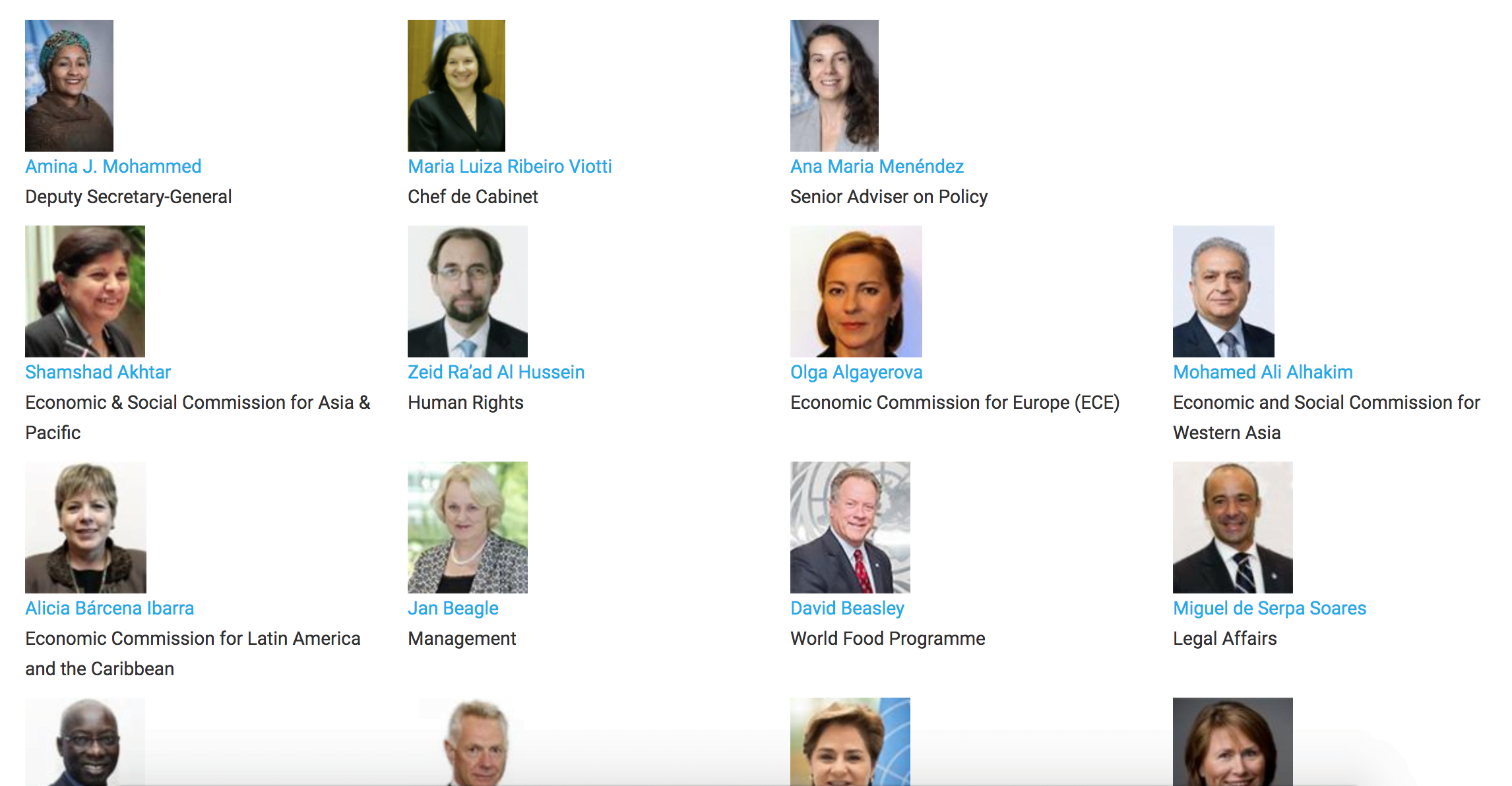There are forty-four most senior positions in the United Nations system, excluding the Secretary General himself.
As of this week, twenty three are held by women.
On Tuesday, Nahla Valji, the UN senior advisor for gender equality, announced on Twitter that half of the 44 members of the Secretary General’s Senior Management Group are women. Full gender parity among this group had been achieved.
Today the @UN hit a major milestone. For the first time in history, there is full gender parity in the top leadership of the United Nations – SG’s @antonioguterres 44-member Senior Management Group. @UN_Women @amgoetz @ICRW @Peace_Women
— Nahla Valji (@nahlav) January 16, 2018
The Senior Management Group is effectively the “cabinet” of the Secretary General, who serves as its chair. It comprises the executive directors of UN agencies like UNICEF and the World Food Program; the heads of major offices like UN Peacekeeping and Humanitarian Affairs; and the leaders of the UN’s regional offices and other major UN entities. It meets regularly to discuss top-level policy issues across the UN system.
In 2015 the Senior Management Group included 26 men and 16 women. Now, for the first time in the 77 year history of the UN, it is comprised of an equal number of women and men.
This milestone is a good demonstration that the Secretary General’s commitment to gender parity is genuine. Still, the UN system has a long way to go.
The United Nations has had nine secretary generals. All have been men. When Antonio Guterres took office last year there was a bit of controversy for the fact that this streak was not broken, despite the fact that many qualified women put their hat in the ring to lead the United Nations.
Still, Guterres came to office pledging to work toward gender parity among senior levels of the organization. He made good on this pledge early in his tenure by appointing an all-female team of top advisors, including deputy Secretary General Amina Mohammed. In September, he unveiled a “System Wide Strategy on Gender Parity” to serve as a directive for the entire UN System to achieve full parity in the next eight to ten years.
To that end, the report identified some key gaps. It found that at the end of last year over 70% of assistant secretary generals, under secretary generals, special envoys and other top leaders were men. It also found that women comprised only 25% of heads or deputy heads of peacekeeping missions. (But even that was a sharp increase from ten years prior, when women comprised just 2% of these peacekeeping posts.)
Most startlingly, the report offered concrete evidence that as women advanced through middle management to senior management roles, their numbers thinned out.


The UN first agreed to achieve full gender parity nearly 18 years ago. But the political will necessary to make good on this pledge was fully marshaled — other priorities always seemed to intervene. The fact that parity was achieved in the Senior Management Group within just one year of Antonio Guterres taking office suggests his support of gender parity is more than just rhetoric. The political will to make this a reality seems to be genuinely there.
